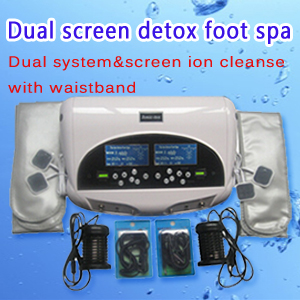Please protect your bones
If you have osteoporosis, or are at risk for it, you want to do all you can to keep your bones as strong as possible. Besides following your doctor's advice on diet and exercise, you should know that some medications are bone-friendly -- and others may have side effects that affect the bones.
Some medications prescribed for common health problems, such as heartburn or depression, could affect your bone health.
"That doesn't necessarily mean you should stop them," says Harold Rosen, MD, director of the Osteoporosis Prevention and Treatment Center at Beth Israel Deaconess Medical Center in Boston.
Rather, "it's crucial to weigh the pros and cons: the benefits of the medicine against the effect on the bones," he says.
The benefits of a drug may outweigh the risks. Or your doctor may prescribe a ''bone-maintenance" drug to offset the risk, Rosen says.
Corticosteroid Drugs and Bone Health
This type of steroid drug helps curb inflammation. Doctors prescribe them for conditions including rheumatoid arthritis, asthma, and ulcerative colitis.
Some examples include:
1. cortisone (Cortone)
2. prednisone (Deltasone, Meticorten, Orasone, Prednicot)
These steroids hamper bone formation and increase bone resorption, which can make a fracture more likely, notes endocrinologist Ann Kearns, MD, a consultant at the Mayo Clinic in Rochester, Minn.
However, she says, some people need these drugs. And the ''short-term risk is not a big deal for most people," Rosen says.
How you take the drugs may also matter. Pills or shots are the most powerful, but those you inhale or put on your skin are "less concerning," Kearns says.
GERD Drugs and Bone Health
If you have GERD (gastroesophageal reflux disease), your stomach acid backs up into your esophagus. You may be taking a type of drug called a proton pump inhibitor (PPI), which may or may not require a prescription. PPIs include:
1. esomeprazole (Nexium)
2. lansoprazole (Prevacid)
3. omeprazole (Prilosec, Zegerid)
In 2010, the FDA warned that taking high doses of PPIs for a long time may make fractures of the hip, wrist, and spine more likely. The FDA ordered a labeling change on the medicines to note the risk.
Other drugs, called H2 blockers, curb the production of stomach acid. H2 blockers include:
1. cimetidine (Tagamet)
2. famotidine (Calmicid, Fluxid, Mylanta AR, Pepcid)
3. ranitidine (Tritec, Zantac)
These drugs may be more bone-friendly, according to Kearns, but that's not certain yet.
Bone-Maintenance
Drugs Bisphosphonates are a type of osteoporosis drug.They include:
1. alendronate (Binosto, Fosamax)
2. ibandronate (Boniva)
3. risedronate (Actonel, Atelvia)
4. zoledronic acid (Reclast)
Some studies linked their long-term use to a greater chance of an uncommon fracture of the thigh bone.
If someone who's been taking a bisphosphonate for a long time has that rare type of thigh bone fracture, their doctor should switch them to another type of osteoporosis drug, Deal says.
The following drugs are among the alternatives to bisphosphonates for either treating or preventing osteoporosis:
1. denosumab (Prolia). This is a biologic drug that slows bone loss.
2. raloxifene (Evista)
3. teriparatide (Forteo). This is a type of parathyroid hormone that increases bone formation.
Hormone replacement therapy
If you've been taking a bisphosphonate for five years, Deal says your doctor may check to see whether you should continue, stop, or switch to another bone-maintenance drug.
Hormone replacement therapy (HRT) -- either estrogen alone or a combination of estrogen and progestin -- used to be prescribed for the prevention and treatment of osteoporosis. The drug Duavee (estrogen and bazedoxifene) is a type of HRT approved to treat menopause-related hot flashes. Duavee may also prevent osteoporosis in high-risk women who have already tried non-estrogen treatment.
Research has shown that hormone replacement therapy increases the risk of breast cancer, heart disease, and stroke in some women. So while HRT is known to help preserve bone and prevent fractures, it isn't generally recommended at this point for treating osteoporosis because the health risks are thought to outweigh the benefits.
In women who have been on menopausal hormone therapy in the past and then stopped taking it, the bones begin to thin again -- at the same pace as during menopause.
In addition, through 3D-NLS we can better understand the impact of various drugs on our bonescaused, In order to better protect our bones.
This article is provide from [Metatron 4025 hunter],please indicate the source address reprinted:http://www.healthycarer.com/news/other/1176.html






